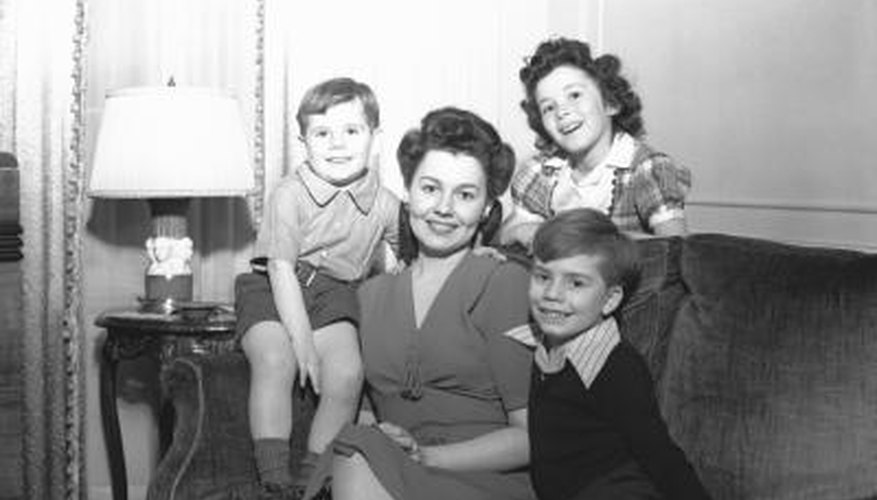In the wake of World War II, life in Britain in the 1950s had the same celebratory sense of ease that was being felt in America. The region was again enjoying a time of affluence, with less sacrifice. By the mid-fifties, broadcasting had been deregulated and the British people were seeing American television. This had a strong influence on British citizens, especially the youngsters.
Young Girls
Girls under the age of 10 or 12 in the 1950s most often wore skirts or dresses, even for events that would call for casual dress today, like a picnic. In public, British children were always dressed well. Jumpers were often seen on young girls, consisting of a flared skirt and straps that went over the shoulders. Girls wore them with a blouse underneath. For church or a social event, girls wore party dresses with lots of ruffles, bows, puffed short sleeves and flared skirts above the knee. Jumpers and dresses were worn with anklet socks and buckled shoes.
- Girls under the age of 10 or 12 in the 1950s most often wore skirts or dresses, even for events that would call for casual dress today, like a picnic.
Young Boys
Fashion for British children in the 1950s still had a very conservative innocence to it. Boys under the ages of 10 or 12 rarely wore long trousers, still wearing the short trousers of childhood, especially to school. British schools had a uniform requirement. Boys wore grey shorts with socks to the knee, a buttoned shirt and sometimes a tie and jacket. To play, boys would also wear short trousers. As the '50s wore on, boys began wearing long trousers for social occasions. A tank top and a buttoned shirt was worn with them. For dressy occasions like church, boys wore dark suits, like their fathers.
- Fashion for British children in the 1950s still had a very conservative innocence to it.
- Boys under the ages of 10 or 12 rarely wore long trousers, still wearing the short trousers of childhood, especially to school.
Older Girls
In terms of British fashion in the 1950s, children were kept looking like children for as long as possible, then they seemed to grow up completely overnight. The word teenager had never been used before the '50s and when the term hit Britain it took it by storm. Girls beyond puberty began buying their own clothes and following American trends. They wore long wool or tweed skirts with oversized sweaters. They wore rolled-up jeans when they could, although this was still frowned upon by polite society. When teenage girls dressed up in Britain, they wore fancy party dresses with layers of petticoats, gloves and heels.
- In terms of British fashion in the 1950s, children were kept looking like children for as long as possible, then they seemed to grow up completely overnight.
- When teenage girls dressed up in Britain, they wore fancy party dresses with layers of petticoats, gloves and heels.
Older Boys
Teenage boys, too, grew up quickly in Britain in the '50s. Teens back then were usually married by 20 or 21. So, it was not shocking to see them looking adult in their teenage years. Their style mirrored American styles for the most part. They wore jeans when they could, although not every mother in Britain allowed the casual look. For school or social events, boys wore dark wool dress trousers or two-piece suits. Certain trends were distinctly British. Like America had its mods or beatniks, 1950s Britain had the Teddy Boys. The UK's version of greasers, Teddy Boys wore pompadour hairstyles and long, Edwardian style frock coats.
- Teenage boys, too, grew up quickly in Britain in the '50s.
- So, it was not shocking to see them looking adult in their teenage years.
